Join us for conversations that inspire, recognize, and encourage innovation and best practices in the education profession.
Available on Apple Podcasts, Spotify, Google Podcasts, and more.
Look for the following topics in the video, indicated by the ![]() onscreen icon, and click below to learn more.
onscreen icon, and click below to learn more.
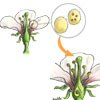 Alternation of |
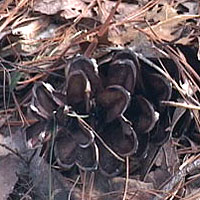 Transition From Water to Land |
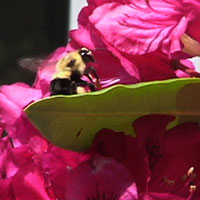 Flowers and Pollination |
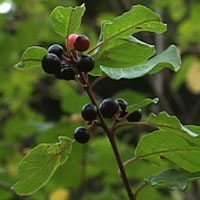 Fruit and Dispersal |
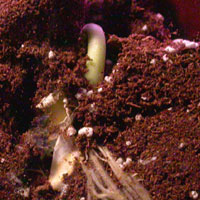 Seeds vs. Eggs |
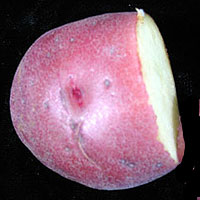 Teaching Tips: Asexual Reproduction |
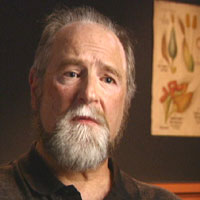 Scientist at Work |
Curriculum |
At first glance, a comparison of plants and animals suggests that members of these groups have very little in common. A closer look at their life cycles, however, reveals similarities that often surprise people. Just like animals, plants are characterized by sexual reproduction, with new individuals being formed by the union of sex cells. While plants cannot be said to have separate sexes in the same way that animals do, they form sperm and eggs in male and female structures, just like animals. And, just like the sex cells of animals, the sperm and eggs of plants carry half of the hereditary material in the parent’s genome. Beyond this, however, plant life cycles are unique in that they exhibit a process found in no other group of organisms — alternation of generations.
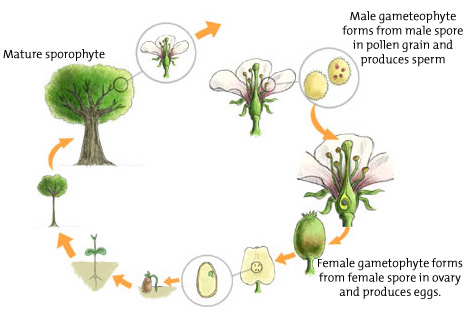
Alternation of generations in a flowering plant
In an animal life cycle, male and female parents each create sex cells (sperm and eggs) that unite to form a fertilized egg and develop into an offspring organism. Plants, likewise, have sperm and eggs in their life cycles, but these are produced by an intermediate stage between the adult and the offspring.
These stages, which were explained by Dr. Judith Sumner in the video, can be thought of as different “generations” within the same life cycle. The adult generation produces spores, while the spore generation produces sex cells. The scientific terms for these generations are sporophyte (sporo = spore; phyte = plant; therefore, spore-producing plant) and gametophyte (gameto = sex cell; phyte = plant; therefore, sex-cell-producing plant).
To understand the differences between these two generations, it may help to revisit ideas explored in Session 3: Animal Life Cycles. In the body cells of animals, chromosomes exist in pairs — a condition we’ll call doubles. Animal sex cells have half as many chromosomes as their body cells — a condition we’ll call singles. In an animal life cycle, the sex cells are the only cells where chromosomes exist as singles. The rest of the life cycle involves body cells that carry chromosome doubles. This is where plants differ. In plants, one entire generation carries its chromosomes as singles, while the other carries its chromosomes as doubles. Let’s take a closer look.
When we look at a plant, we’re almost certain to be looking at the sporophyte generation. The sporophyte generation carries its chromosomes as doubles. In this sense, it is analogous to the adult animal, which also carries its chromosomes as doubles. The sporophyte generation, as its name indicates, produces spores. Spores carry chromosomes as singles. The spores then develop into the gametophyte generation.
In most plants, the gametophyte is tiny compared to the sporophyte. As its name implies, the gametophyte generation produces sex cells — sperm and eggs. Like the gametophyte itself — and like the sex cells of animals — the sex cells carry chromosomes as singles. Fertilization brings chromosome doubles back together in the fertilized egg. The life cycle is completed with the development of the sporophyte, which carries chromosomes as doubles.
Life scientists have developed several theories to account for the evolution of alternation of generations in plants. One theory has to do with having the “best of both worlds” in terms of variation in a population (a topic explored in Session 5: Variation, Adaptation, and Natural Selection). In the formation of spores, only one parent contributes the hereditary material. This could be beneficial if that parent exists in a stable environment — it creates offspring with the same characteristics that allowed it to survive and reproduce. With sex cells, two parents are involved, and a mixing of hereditary material occurs. This results in offspring that vary from both parents and from one another. This could be beneficial in a changing environment where some variants are likely to be suited to that environment while others may not be.
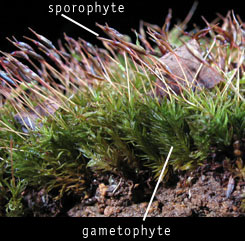 Mosses
Mosses
It’s actually easiest to observe alternation of generations in the most primitive group of plants: the mosses. If you’ve ever looked closely at a moss, you may have noticed a tiny leafy green mat from which a stalk protrudes at certain times of the year. The stalk is the sporophyte. From its cap, spores are cast that land on the ground and develop into the gametophyte—the leafy green mat. Special structures within the mat produce sperm and egg. The sperm swim to the eggs and fertilize them. A stalk, which remains attached to the mat, results from each fertilized egg. The moss life cycle thus requires ground water in order to be completed—this is why mosses are always found in moist environments.
Ferns
Another major plant group includes the ferns. In ferns, the different generations exist as distinct individuals. The graceful fronds, or leaves, that we see adorn the sporophytes. If you look under the fronds of a mature plant, you’ll see structures where the spores are produced. The spores are cast from these structures onto the ground, where they develop into gametophytes. The gametophytes are tiny heart-shaped structures that are nearly invisible to the naked eye. They require a moist environment to develop and, once mature, produce sperm and egg. Like the mosses, the sperm require water to swim to the eggs, with each fertilized egg developing into the familiar, frond-bearing sporophyte.
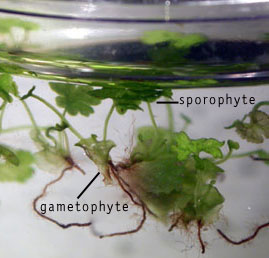
Ferns with gametophye and sporophyte sections
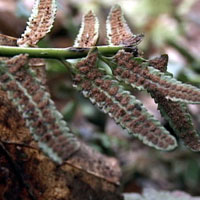
Christmas fern with sporangia
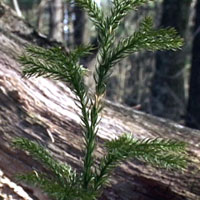
Conifer sporophyte
Conifers
In the conifers, the stately needle- and cone-bearing trees are the sporophytes. Conifers actually have two different types of cones. The female cone is probably what you are familiar with, bearing hard, woody scales. In a structure on top of each scale of the female cone, female spores are produced, which develop into the microscopic female gametophyte — a plant that consists of only one cell for most of its existence. The gametophyte remains inside the structure that produced it, which itself remains attached to the scale.

Female cone
The male cones are much smaller than the female cones and are the structures that produce copious amounts of yellow “dust” in the Spring. On the underside of each tiny scale are structures that produce numerous male spores, which develop into gametophytes that consist of just four cells. The gamteophyte and its covering are the pollen, which is carried by wind to the female cone. Pollination occurs when pollen lands at the sticky base of the scale and the sperm grows to and fertilizes an egg, which eventually forms a papery seed on top of the scale. Note that, unlike mosses and ferns, water is not required to bring sex cells together and that the embryo develops in a seed, where it is protected from drying-out and is supplied with food.
In the video, flowering plants were used to introduce alternation of generations.
Flowering plants
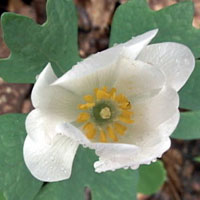
Flowering plant (sporophyte)
Alternation of generations in flowering plants is essentially the same as in the conifers (and just as complicated), except that flowers represent the sporophyte. Female structures, called ovaries, contain structures that produce the female spores. These develop into a seven-celled gametophyte inside the ovary — you can think of it as a tiny plant inside a plant. The male stuctures, called stamens, produce the pollen. As in the conifers, the male gametophyte develops inside the pollen grain.
Pollen from the male parts of one flower is delivered to the female parts of another flower in various ways: wind, insects, birds, bats, etc. When pollination occurs, sperm form and grow to the ovaries, where they fertilize eggs. A fertilized egg develops into a seed inside the ovary. Again, notice that this process does not require water to bring sex cells together, and that a seed protects the developing embryo. The difference between conifers and flowering plants is that the seeds develop within an ovary (the fruit) rather than on top of a cone scale.
Though teaching life cycles to a K-6 classroom doesn’t require this much detail, once you are armed with this knowledge, you can look at plants and their life cycles in a much more informed way. The main message is this: plant life cycles are unique from animals because of alternation of generations. And even though there are differences between groups of plants, the pattern is the same: spore-producing stage alternating with sex cell-producing stage.
There is overwhelming evidence that the ancestors of modern land plants evolved in aquatic environments, where they existed and diversified over millions of years. From one group of these organisms — probably ancestors of modern species of protists known as green algae — emerged a new branch on the tree of life. From this branch arose four groups of land plants, including the mosses, the ferns, the conifers, and the flowering plants. These groups are believed to represent a sequence that reflects the evolutionary history of land plants.
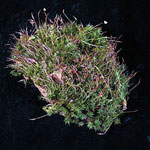
Moss, a primitive land plant
Body support
As plants evolved from aquatic to terrestrial environments, several obstacles stood in the way. One obstacle was structural support. In water, organisms are buoyant and the effects of gravity are minimal. Even among larger forms, like kelps, structures with gas-filled vesicles allow them to float. On land, however, if a plant is to grow tall, it needs to withstand the forces of gravity. What adaptations allowed plants to get tall? Rigid cell walls developed to provide support, as did different types of supportive tissues — the woody tissue layers of trees are good examples. The mosses lack these tissues, and are thus limited to a “lowly” existence on the ground. This type of support is found in the ferns, but is fairly primitive. There are thus few ferns that grow more than a meter above the ground. It is in the conifers and flowering plants that we observe the most well-developed adaptations of this nature.
A second challenge to life on land was the distribution of water and other materials to each cell. In aquatic forms, transport occurs directly from the surrounding environment. On land, however, plants must get water and other materials from the soil. What adaptations allowed taller plants to obtain these materials? During plant evolution, systems of “conducting vessels”—tube-like structures—developed that function to transport materials up, down, and around the plant. A differentiation of plant parts also evolved: leaf cells that specialize in making food; stem and branch cells to provide support; and root cells to transport nutrients from the soil. This differentiation into “true” leaves, stems, and roots made it possible for different parts of plants to fulfill different roles — all of which provide support for plants to live away from water and become tall at the same time.
A third challenge during the transition to land involved bringing sex cells together. In water, sperm are able to swim directly to eggs. On land, this can only happen in moist environments—and this is exactly what happens with mosses and ferns. Other land plants, however, exist away from such environments. What adaptations allow fertilization to occur in these plants? The answer is found in alternation of generations (described above). The sporophyte generation—the adult generation that produces spores— produces microscopic gametophytes within special structures that provide water and nutrients. The male gametophytes, which form non-swimming sperm, develop within pollen grains. The female gametophytes, which produce eggs, develop on scales (in conifers) or within ovaries (in flowering plants). Pollen is adapted to use wind to transport sperm to eggs, which replaces the need for water.
A fourth challenge for land plants resulted in the evolution of seeds. In aquatic environments, a fertilized egg can develop into an embryo that is never in danger of dehydrating. In addition, the embryo can receive water and nutrients directly from the surrounding environment. The opposite is true on land. On land, an embryo can dry out rapidly and exists in an environment where water and nutrients exist in the ground. Seeds represent adaptations that conquer these challenges. Seeds enclose an embryo in a moist environment. And, tissues within seeds provide food for a developing embryo. Finally, seeds represent a way of dispersing the young of plants away from water as well as away from the parent plant. The seed plants include the conifers and flowering plants. Mosses and ferns, which do not produce seeds, still depend on water for the above functions.
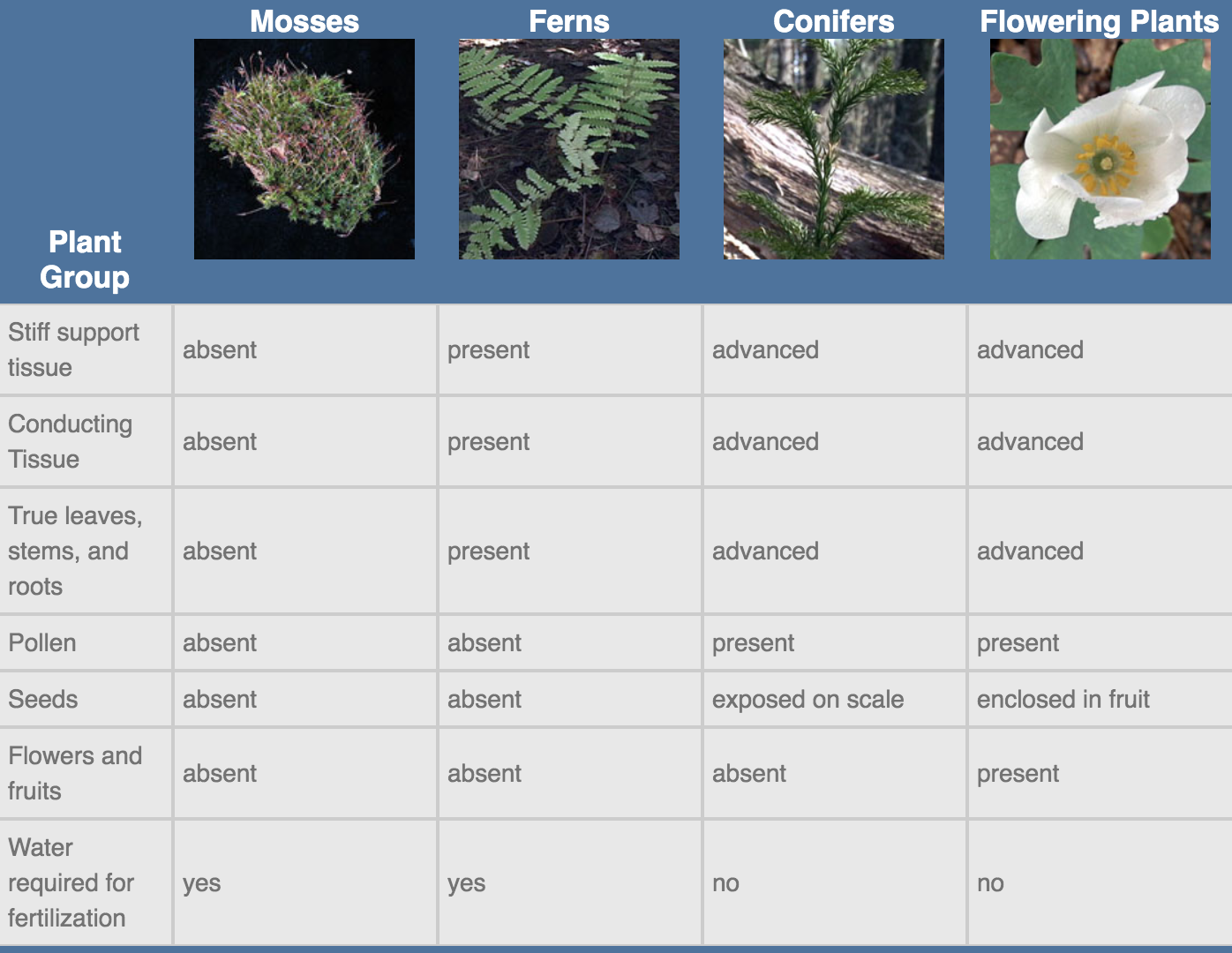
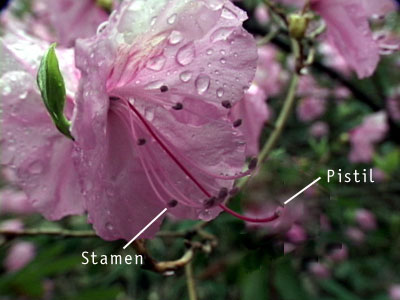
Flower with male and female parts labeled
One of the most crucial events in ensuring the completion of a flowering plant’s life cycle is pollination. With very few exceptions, this involves cross-pollination, where two different parent plants are involved. Successful cross-pollination results in pollen being delivered from the male part, or stamen, of one flower to the female part, or pistil, of another (see picture below). After this occurs, sperm are produced within the pollen grain and a pollen tube carrying the sperm grows toward the ovary at the base of the flower. Fertilization, which is another crucial event, occurs when the pollen tube grows into the ovary and sperm are united with egg.
The means by which pollination occurs varies from plant to plant, with most plants having specific pollinators. Pollinators include wind, water (rarely), and animals like bees, beetles, flies, hummingbirds, and even bats. Flowers have evolved to use their pollinators in ways that maximize efficiency and effectiveness.
The position of the stamens, for example, tends to maximize the delivery of pollen to the right pollinator. For example, stamens extending far away from the flower can be an indication that wind is the pollen vector. Stamens that lay close to the flower can indicate a pollen vector that must land and walk inside — like a fly. The same is true of the pistils. Most flowers that are pollinated by insects (including the one pictured above) have pistils that extend beyond the stamens. This increases the chances that a pollinator delivers pollen from another flower on the way in and picks up new pollen on the way out. This also decreases the chances of pollen from one flower falling onto the pistil of the same flower.
One of the most amazing examples of adaptation is seen in the intricate relationships between flowers and their animal pollinators. Many flowers have ways of attracting pollinators from a distance. Their shapes, background colors, and fragrances bring the pollinator to the flower. Sweet fragrances, for example, attract nectar feeders, like butterflies, flies, and bees. Non-red flowers attract bees, which can’t see red. Once at a flower, intricate color patterns — such as “nectar guides” that point the way to nectar — act to ensure that pollen is both delivered and picked up by the right pollinator. The shapes of many orchids actually mimic those of insects and fool them into “mating” with the flower. Even the placement of nectar — such as deep within a flower — is an adaptation to increase the chance of effective pollination.
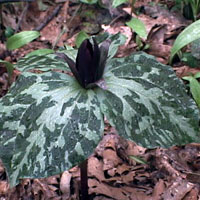
The phyllium plant attracts flies by giving off a smell of rotting meat

Berries (mature plant ovaries)
After pollination and fertilization have occurred, the next events in a flowering plant’s life cycle involve the development of the offspring, which starts out as an embryo within a seed, which develops in the ovary. If this stage is successful, the next crucial event is dispersal of the seed to a suitable environment for it to germinate, grow, and develop into a reproductive adult. Seeds have a few different ways of being dispersed: expulsion, wind, water, and animals. In flowering plants, the mature ovary — or fruit — has evolved adaptations that increase the success of dispersal.
Fruits can be classified into one of two broad groups: dry or fleshy. Dry fruits include grains (rice, corn, wheat, etc.) dandelions, sunflower seeds, nuts (acorns, peanuts, hickory nuts, etc.), and legumes (peas, beans, etc.). Fleshy fruits include berries, citrus fruits (oranges, lemons, etc.), drupes (peaches, cherries, etc.), pomes (apples, pears, etc.) and many more. Many produce items we call vegetables — like tomatoes and squash — are actually fleshy fruits.
In general, dry fruits are adapted for dispersal by expulsion, wind, and by attaching to the fur or feathers of animals. A mature pea pod, for example, dries to the point where it pops open, releasing the seeds. The “wings” of maple seeds or the “parachutes” of dandelions carry them in the wind away from the parent plant. People and pets may even have carried seeds away from plants that bear fruit as burrs.
Fleshy fruits tend to be adapted for dispersal by animals, who are attracted to them as food. Perhaps one of the most common means of dispersal is via fruit, which is ingested by animals and distributed in their wastes. There is a large range in size of seeds, which corresponds to the size of the animal that eats them. For example, berries have relatively small seeds and small fruit. Squirrels and birds often disperse these seeds. Conversely, avocados and peaches are quite large and have very large seeds. These large fruits are eaten by larger mammals. Finally, some fleshy fruits, such as coconuts, are adapted to float in water.
The next time you’re at a supermarket, take a look in the produce section and identify all of the fruits. What can they tell you about the way they are dispersed?
Although seeds and eggs — referring to “supermarket” eggs and not the sex cells — appear to be very different, they both arise in the same way and serve the same functions in the plants and animals that produce them. Both develop from the union of male and female sex cells, and both act as structures that protect and supply nutrients to a developing embryo. Eggs and seeds are also both considered to be adaptations to a life on land. They both enclose the embryo in an environment that prevents dehydration, while still allowing gases to flow in and out.
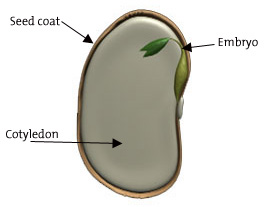 There are other features that make seeds and eggs comparable. In flowering plants, one or more seeds develop within an ovary. The seed coat, which is the hard structure that surrounds the seed, develops from the wall of the chamber where the fertilized egg begins to develop. Inside the seed is a food source—the endosperm— that forms as the result of fertilization. As the embryo grows inside the seed, it uses the endosperm for food. The endosperm develops along with the embryo into one or two seed leaves, or cotyledons, that act as a food source after germination until photosynthesis can take over.
There are other features that make seeds and eggs comparable. In flowering plants, one or more seeds develop within an ovary. The seed coat, which is the hard structure that surrounds the seed, develops from the wall of the chamber where the fertilized egg begins to develop. Inside the seed is a food source—the endosperm— that forms as the result of fertilization. As the embryo grows inside the seed, it uses the endosperm for food. The endosperm develops along with the embryo into one or two seed leaves, or cotyledons, that act as a food source after germination until photosynthesis can take over.
In animals such as birds and reptiles, eggs are fertilized internally. As an egg passes through the female reproductive tract, the egg white is secreted around it, followed by a shell membrane and the shell. As this is happening, the fertilized egg is beginning to develop into an embryo and other parts of a “life support system.” One part is the yolk, which is a food source rich in fats and proteins that is secreted into sac that connects directly to the embryo. Another part connects to the embryo and collects wastes. A third part envelops the embryo in a fluid filled sac, which protects it as it floats freely.

A potato eye — an example of an
asexually reproducing structure
Sexual reproduction and the unique process known as alternation of generations characterize the life cycles of plants. Other strategies for reproducing can also be observed in plants — strategies that don’t involve the union of sperm and egg. These strategies involve asexual reproduction, where one parent plant propagates offspring that are genetically identical to it. While a few animals can reproduce asexually, most do not have this ability.
Have you ever stored potatoes or onions that began to sprout new parts after a while? These are great examples of asexual reproduction in plants. Interestingly, asexual reproduction in plants is most often associated with food storage structures that the plant uses to sustain itself during times of dormancy. The new plant arises from a bud that exists on the food storage structure. The following are some examples of asexual reproduction in plants—from buds in leaves, stems, and roots.
Onions, garlic, and lilies are examples of modified leaves, called bulbs that serve as underground food storage for a dormant plant. After these plants have flowered and the above ground leaves have fallen away, buds at the base of the bulb represent next season ’s growth.
Many plants reproduce asexually from stems—either below or above ground. Corms, rhizomes, and tubers are good examples. Corms are short, rounded stems with buds located at the top. An example is a gladiola. You can tell the difference between a bulb and a corm by the presence of leaves in the storage unit of the former. Rhizomes are underground stems with buds located at the tips of the branches. Irises produce these types of rhizomes. Most people are surprised to learn that potatoes are actually enlarged parts of stems—mostly occurring underground. These types of food storage structures are called tubers. The “eyes” on a tuber consist of a tiny leaf and a bud, which can sprout into a new plant.
Sweet potatoes represent storage roots. These structures include tuberous examples, like the sweet potato, beets, and turnips as well as longer tap roots, like carrots and parsnips. On the tuberous examples, the buds occur above the root or are scattered upon it. On the taproots, tiny buds exist at the base of the shortened stem.
Consider bringing some of these examples into your classroom and starting a garden of plants that reproduce asexually!
 Dr. Judith Sumner is a botanist who specializes in flowering plants, specifically their evolution, morphology, anatomy, and adaptations. She has taught extensively both at the college level and at botanical gardens. She served as education director at Garden in the Woods (New England Wild Flower Society) until she accepted her present position at Assumption College in Worcester, where she is a member of the natural sciences faculty. Sumner has published monographic studies in the American Journal of Botany, Pollen et Spores, and Allertonia. She monographed two families for recently published volumes of Flora Vitiensis Nova. Her first book, The Natural History of Medicinal Plants, was published in October 2000; her second, Domestic Botany: The Natural History of Household Plants, is due out in 2004.
Dr. Judith Sumner is a botanist who specializes in flowering plants, specifically their evolution, morphology, anatomy, and adaptations. She has taught extensively both at the college level and at botanical gardens. She served as education director at Garden in the Woods (New England Wild Flower Society) until she accepted her present position at Assumption College in Worcester, where she is a member of the natural sciences faculty. Sumner has published monographic studies in the American Journal of Botany, Pollen et Spores, and Allertonia. She monographed two families for recently published volumes of Flora Vitiensis Nova. Her first book, The Natural History of Medicinal Plants, was published in October 2000; her second, Domestic Botany: The Natural History of Household Plants, is due out in 2004.
 Dr. Dan Scheirer is an associate professor of biology and also directs the Electron Microscopy and Imaging Center at Northeastern. A plant biologist, Professor Scheirer’s research has focused on studying patterns of plant cell development with diverse plants ranging from algae and mosses to flowering plants, including the plant model organism, Arabidopsis thaliana. Scheirer is also a forensic botanist, and applies plant cell and molecular biology to the resolution of legal questions. A passionate teacher and classroom innovator, Scheirer teaches an introductory biology course as well as higher-level courses in plant biology, plant development, and electron microscopy. He has authored more than 50 scientific publications as well as essays for college texts and student study guides.
Dr. Dan Scheirer is an associate professor of biology and also directs the Electron Microscopy and Imaging Center at Northeastern. A plant biologist, Professor Scheirer’s research has focused on studying patterns of plant cell development with diverse plants ranging from algae and mosses to flowering plants, including the plant model organism, Arabidopsis thaliana. Scheirer is also a forensic botanist, and applies plant cell and molecular biology to the resolution of legal questions. A passionate teacher and classroom innovator, Scheirer teaches an introductory biology course as well as higher-level courses in plant biology, plant development, and electron microscopy. He has authored more than 50 scientific publications as well as essays for college texts and student study guides.
Dan Cousins is the head grower at Wilson Farms in Lexington, Massachusetts, where he oversees the operation of a one-acre, fully computerized and automated greenhouse. Cousins earned his B.S. in Botany at the University of Texas. After graduating, Cousins worked for five years in Texas as a commercial grower before being hired to serve as a grower at Cornell University. While at Cornell, he also taught a course on interior plantscaping.
BSCS’s Science T.R.A.C.S. (Teaching Relevant Activities for Concepts and Skills) engages young learners in science and technology through active, inquiry-oriented experiences guided by the National Science Education Standards and the Benchmarks for Science Literacy.
Through investigations into the weather, the Sun, the Moon, the stars, plants and animals, electrical systems, ecosystems, and much more, students not only develop an awareness of the world around them, but also an understanding of how that world works. Students also learn to work together as reliable members of a scientific team—a great way to make sure everybody in the group is involved and successful.
With BSCS Science T.R.A.C.S., students are partners with their teachers in the assessment process. Within each lesson, students check their own understanding individually or with their team. For more information, contact:
Kendall/Hunt Publishing
1-800-542-6657
http://www.kendallhunt.com/